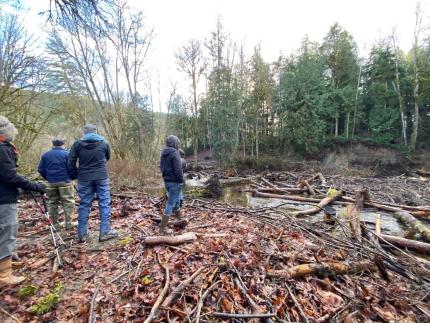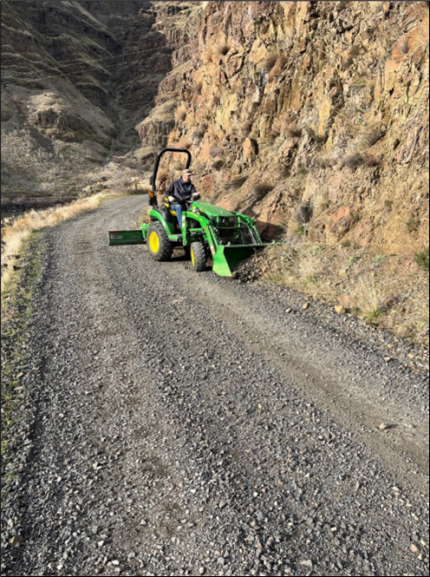
Wildlife Program report: Jan. 1-15, 2024
Managing Wildlife Populations
Golden Eagles: Biologist Lowe attended a meeting to learn about a tool developed by Research Scientist Watson and GIS Analyst Jansen to predict landscape use by breeding golden eagles. The tool is intended to be used for evaluating wind power development in Washington.
Providing Recreation Opportunities
Rogersburg Road: Access Technician Nielsen used the access John Deere 2502R tractor to grade and make repairs to Rogersburg Road along the lower Grande Ronde River. Several neighboring landowners complimented Steve on his good work!

Asotin Creek Wildlife Area Shooting Range: Heimgartner and Nielsen used the access program dump trailer and 2025R John Deere tractor to spread gravel at the parking area for the shooting range. One load of gravel was hauled up from the Clarkston Shop and the other two came from a stockpile at the mouth of Dry Gulch. Heimgartner and Nielsen also installed new fire rings at the Black Butte access site and swimming hole site near Joseph Creek Road.
Providing Conflict Prevention and Education
W. T. Wooten Wildlife Area: Natural Resource Technician Tritt checked the elk fence along the Mountain Road for trees over the fence after the severe winds in the area this week.
Reported Wolf Activity: Wildlife Conflict Specialist Kolb responded to a complaint of a wolf being observed in a 200-acre calving pasture in Columbia County. Non-lethal deterrents were deployed and Kolb will check in with the producer and monitor the pasture during calving operations.
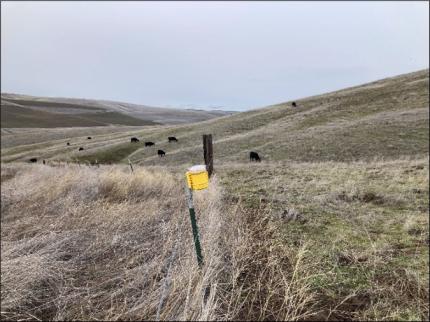
Cougar Depredation: Natural Resource Technician Harris and Wildlife Conflict Specialist Samsill responded to a complaint from a landowner that has had a total of six goats go missing over the last two months, three of which had disappeared over the weekend. Harris and Samsill investigated and determined that a cougar was responsible for the most recent disappearances. Harris and Samsill coordinated with Stevens County Sheriff's Office to deploy hounds and removed an adult tom. DNA and tooth samples were collected, and the cougar carcass was donated.
Conserving Natural Landscapes
Fence Repair: Technicians Hammons and Meisner started the week checking a hot spot in the elk fence where they know trees will soon fall on it and it will need repaired. No trees have fallen yet. On Tuesday, Hammons and Meisner removed about 200 yards of high-tensile fence wire near the Cougar Creek access site that was broken and hanging loose. The wire was replaced with a barbed wire and stretched tight on the existing posts. Access Technician Nielsen assisted at Cougar Creek. They also continued fence work on Bonneville Power Administration funded lands at Stringtown Gulch and Long Gulch.
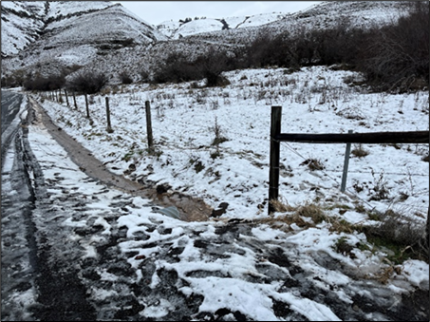
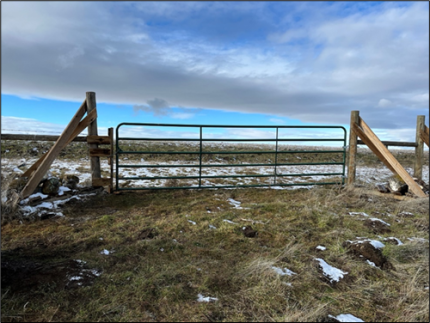

Conducting Business Operations and Policy
Entry Road Maintenance: This week Wildlife Area Manager Finch graded the 1-mile road coming into the shop area and the short road going to the office. Wildlife Area Assistant Manager Rimmelspacher used the new rock rake to smooth the road surfaces and kick the rocks off to the side of the road after grading. The finish surface turned out extremely smooth with no washboards.
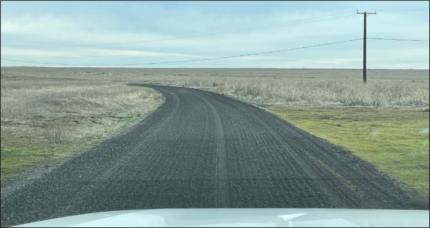
Dog Training Meeting: Wildlife Area Manager Dingman participated in a meeting with biologists and enforcement to discuss the new program for issuing permits to let hunters with hound dogs run mountain lions to train their dogs. Areas on the wildlife areas in south-east Washington were agreed on where this could take place.
Equipment Maintenance: With Dziekan’s assistance, Palmer took possession of a Washington Department of Fish and Wildlife internally surplused snowmobile in Spokane on Tuesday. He spent half a day Wednesday conducting maintenance and repairs on the new sled. This is the second newer used sled Palmer has recently picked up. He will be surplusing two much older sleds from their current location at the wildlife area.

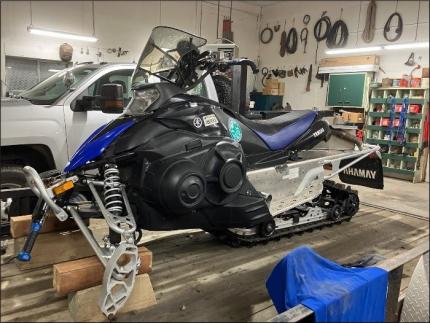
Helicopter Capture Tabletop Exercise: Staff members that will be participating in the 2024 Northeast moose captures (including Biologists Turnock and Prince) participated in an exercise designed to prepare staff for potential scenarios during a helicopter capture. The exercise was extremely helpful and identified a few needs for agency training.
Snowmobile Training: Wildlife Biologists Turnock, Prince, and Ungulate Research Scientist DeVivo participated in the Forest Service’s snowmobile training in the Methow Valley. The training was extremely useful and all three feel much more comfortable operating snowmobiles as a result of the training.

Helicopter Capture Tabletop Exercise: Biologists Lowe and Brinkman participated in a tabletop exercise with staff members involved in upcoming moose captures in Districts 1 and 2. The exercise involved working through potential emergency scenarios and responses during an aerial capture and was very helpful.
Voluntary Public Access – Habitat Incentive Program: Natural Resource Technician Nizer reviewed payable contracts enrolled in Hunt by Reservation or Feel Free to Hunt to see how much is expected to be paid out this year. The total number of payables was sent to Private Lands Section Manager McCanna. Nizer also gave updates on Voluntary Public Access – Habitat Incentive Program (VPA-HIP) new contracts and what habitat work has been done this last year.
Equipment Maintenance Cross-Program Coordination: Sherman Creek Hatchery staff members used the Sherman Creek Wildlife Area shop for two days, performing boat maintenance and repairs.
Managing Wildlife Populations
Sinlahekin Maintenance: Staff members have been using the slow winter months to refurbish equipment that was used during the field season. This is an annual process that helps to make sure equipment is ready to go during the field season and helps to reduce downtime due to equipment failures during our busy times. Currently staff members are servicing a tractor that is used on a variety of projects on the wildlife area. This includes replacing a water pump and doing the regular maintenance.
Wildlife Area Advisory Committee Scheduling: Sinlahekin and Scotch Creek staff members have been working to find a place to hold their annual Wildlife Area Advisory Committee meeting. They hope to have an in-person meeting this year since it has been a couple years since their last in-person meeting. They look forward to this meeting so they can communicate what has been happening on the wildlife areas and to get ideas for future projects.
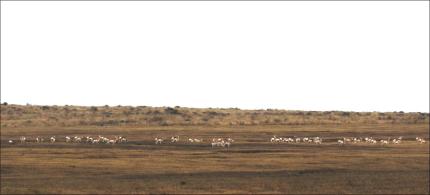
Annual Deer Surveys: Pronghorn Antelope: Private Biologist Braaten continues to document winter herd locations and classifications to Washington Department of Fish and Wildlife (WDFW) staff members regarding pronghorn antelope populations in Douglas County.
Methow Winter Range Closure: A partial closure of the Methow Wildlife Area aimed at protecting wintering migratory mule deer went into effect on Dec. 15. Within approximately 20 days of the closure taking place, staff members noted mule deer activity in several areas that have been nearly void of deer use for several years pre-closure. For example, several groups of deer were seen utilizing the popular Lewis Butte and Rizeor Lake areas in the Rendezvous. Several other groups of deer were monitored in the Frazer Creek area as well as near Sullivan’s Pond. All of the aforementioned areas used to be preferred winter grounds for the Methow’s iconic migratory mule deer herd, but deer presence has been extremely limited or non-existent for years now, likely due to an increase in year-round human presence. These are very early preliminary findings, but promising, nonetheless.
Mule Deer: Early in December Douglas County Wildlife Area Complex staff members assisted with a mule deer survey, identifying deer herds, and estimating herd composition. During this one-day survey, staff observed 254 deer and recorded their location, sex, age, and antler point category.
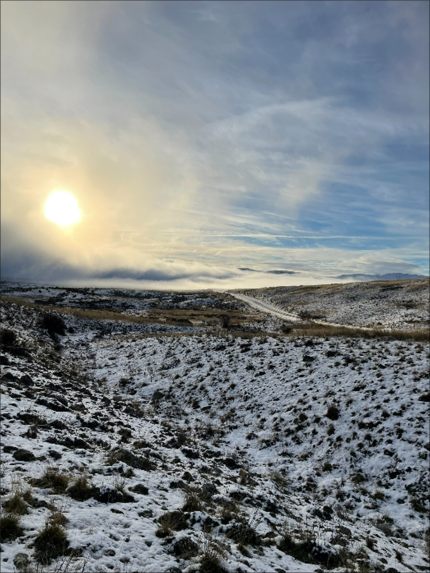
Sharp-tailed Grouse: Douglas County Wildlife Area complex staff members have been coordinating with district biologists, research biologists, and the Diversity Program in an effort to capture sharp-tailed grouse at lek sites in the Big Bend Wildlife Area. They have placed traps and game cameras that have now been there since November.
Staff members have routinely monitored the game cameras and replenished the corn that is used as bait. Sharp-tailed grouse have been detected by the cameras. However, in early December not enough were showing up consistently to go out and trap. The bait that was placed in the traps was covered by snow, which might account for the significant decrease in detections this last round. Once snow covers the ground again, hopefully more grouse will be returning to the leks and be able to be trapped. Staff members hope to affix a GPS collar to a captured bird to gain knowledge on seasonal habitat use.
Providing Recreation Opportunities
Washington Conservation Corps Projects: Over the last few months, Methow Wildlife Area staff members have been working intermittently with a Washington Conservation Corps (WCC) crew to accomplish recreation-related projects. These projects have been planned in close collaboration with statewide recreation staff members, and they are made possible via recently acquired recreation specific funding.
Some of the great work completed by WCC includes buck and rail fencing in Beaver Creek Campground and Davis Lake parking, gate improvements at the Big Valley to support winter snow grooming, shooting range maintenance and cleanup, and trail corridor vegetation maintenance in the popular Cub Creek area of the Rendezvous. Now that winter has finally blanketed the Methow Valley, future recreation related WCC projects are likely on hold until the spring, but there should be more great work to come.
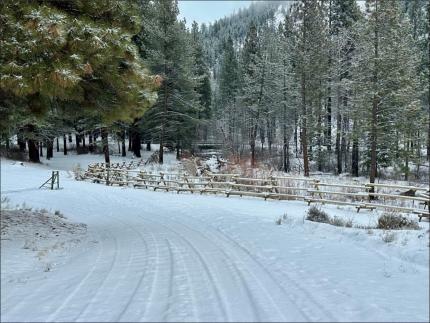
Hunter Access: Biologist Cook obtained landowner signatures on two Hunter Access contracts. One in Adams County on 320 acres as Feel Free to Hunt and another in Grant County on 150 acres as Feel Free to Hunt. The contract in Grant County is on the west side of Winchester Lake and will provide legal access for hunters to wildlife area lands on that side of the lake. It will also provide the landowner with better management tools for the public that have been accessing the property. Biologist Morris will lead habitat projects on a sagebrush shrubsteppe improvement on property in another section, closer to Ephrata, with the same landowner.
Feeding Stations: Staff members have been tending to feeding stations that span across the Wells Wildlife Area and Sagebrush Flats units near Brewster. These stations are filled with wheat seed for upland game birds such as quail, pheasants, chukar, and sharp tailed grouse as well as some species of migratory birds. This year the feeding stations received a revamping, and now have lids and gates to keep animals out of the seed buckets. These new gates and lids allow buckets to be filled with seed preemptively in early December, then opened when hunting season ends. Wheat that is left over from this project is kept on site and available to the public.
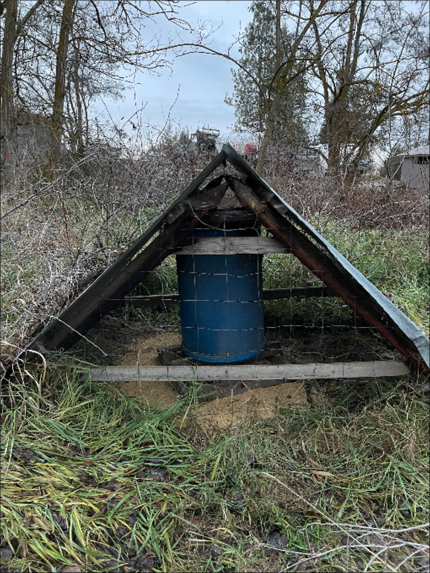
Conserving Natural Landscapes
Habitat Plots: Biologists Cook and Morris met with Columbia Basin Pheasants Forever Board and Natural Resource Conservation Service (NRCS) District Conservationist to discuss the possibility of partnering again in providing funding, technical assistance, and labor to help landowners with installation of shrub rows. Most of the previously installed shrub rows are still functioning and providing cover and food for upland birds and native wildlife. An increase in funding to NRCS is a potential large pool for competitive projects.
Biologist Cook visited the fall planting site of native grasses in a circle corner because of the rather warm winter up to this point (early January). Cook was concerned that weedy cheatgrass might have had the opportunity to sprout and get a foothold despite herbicide applications. Fortunately, the area remained mostly weed free and looked ready for spring germination of native seeds. Hopefully, we get some precipitation.
Biologist Cook has been making plans for a habitat improvement project in a circle corner that has some wetland plants (cattails, common reed, etc.) and borders an irrigation drainage ditch and wetland ponds. The landowner is excited about the potential of the project to improve wildlife habitat and hunting opportunities. The corner is quite weedy and could host some native shrubs to provide food and shelter for wildlife. Russian olive removal could be part of the project as it has some small but established, dense stands.
Private Lands Okanogan County: Private Biologist Braaten provided outreach to two different landowners providing information on habitat recommendations on their properties. Food plots and habitat enhancements for upland birds and riparian habitat conservation concerns were topics covered.
CRP-SAFE: Private Biologist Braaten continues providing outreach and assistance to landowners who were rejected in the last SAFE CRP signup in Douglas County. Private Biologist Braaten relayed concerns to Farm Bill Coordinator Reseland and Landowner Services Division leadership.
Other
Wildlife Area Facilities Maintenance: Staff members spent time installing new metal drip edge on multiple outbuildings to keep rainwater and snow from deteriorating the fascia board. Staff members also started putting down new flooring in the office to replace the old linoleum flooring.
Chopaka Fence Maintenance: Staff members brushed out a section of the North boundary fence on the Chopaka Unit, prepping it for repair, when weather conditions improve.
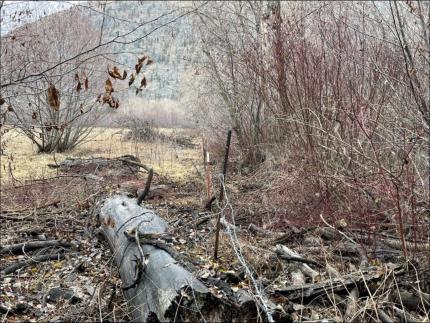
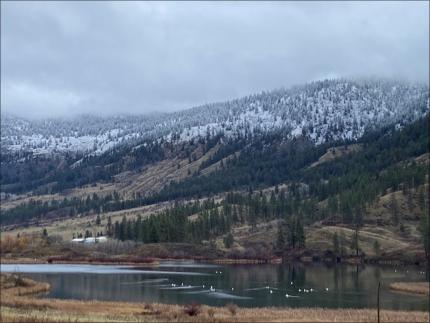
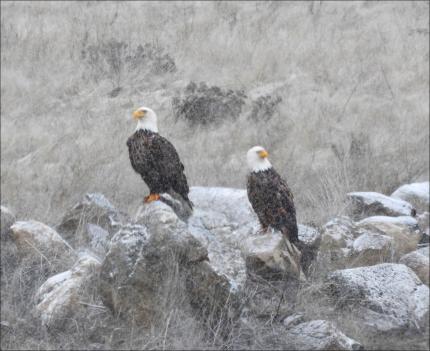
Winter Maintenance: After completing a rather rigorous seeding project in November, this month wildlife area staff members have been tackling various projects to prepare for the winter. These tasks include repairing and maintaining equipment that was used heavily in the fall, winterizing vehicles, and spray tanks.
Lands Division Workshop: There was a Lands Division Workshop in Ellensburg where Douglas County Wildlife Area Complex staff members were able to put faces to names and attend lectures on lands related topics. Many attendees were particularly interested in hearing about the projects going on in other districts that differ greatly from their own.
Managing Wildlife Populations
Sunnyside Wildlife Area Agricultural Lease Monitoring: District 8 Wildlife Biologists Wampole and Moore are developing methods to gain a better understanding of how wildlife use wildlife area fields that are leased to agricultural producers. The objective of these efforts is to determine if the lease objectives are being met, with particular emphasis on determining if the leased fields are providing a source of fall and winter food and cover for resident and migrating game and non-game wildlife. These efforts will help biologists make more informed land management recommendations that will reduce the negative impacts of agricultural activities and optimize the land's benefit to wildlife.
Avoiding Migratory Bird Conflicts with Wastewater Management: District 4 Wildlife Biologist Fidorra coordinated Washington Department of Fish and Wildlife's (WDFW) response to a permit update for a cattle feedlot where several botulism outbreaks have occurred in birds during past summers. The updated permit, issued by Washington Department of Ecology, will require monitoring and response for dead wildlife, WDFW notification, and vegetation management.
Wind and Solar Project Reviews: District 4 Wildlife Biologist Fidorra worked with Washington Department of Fish and Wildlife (WDFW) staff members, developers, and regulatory agencies. They discussed the impacts of several solar and wind projects proposed in the district.
Pelican Research and Management: District 4 Wildlife Biologist Fidorra attended a WDFW and Yakama Nation meeting to discuss white pelican management and a proposed diet study.
Hanford Elk Survey Preparation: District 4 Wildlife Biologist Fidorra spent considerable time preparing logistics for the upcoming Rattlesnake Hills elk survey. The survey is a winter count of elk conducted last in Jan. 2024 as a joint effort with U.S. Fish and Wildlife Service.
L.T. Murray Elk Feeding: The L.T. Murray crew continued with the elk feeding program.
| Week Count: 01/10/2024 | Watt | Robinson | Total |
|---|---|---|---|
| Cow/Calf | 645 | 281 | 926 |
| Spike Bulls | 20 | 5 | 25 |
| Branched Bulls | 37 | 4 | 41 |
| Total | 702 | 290 | 992 |
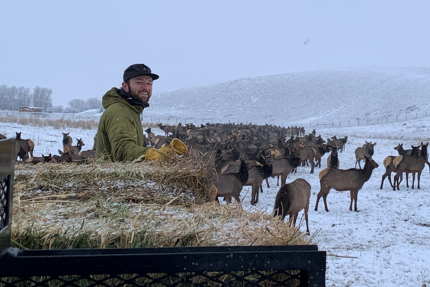
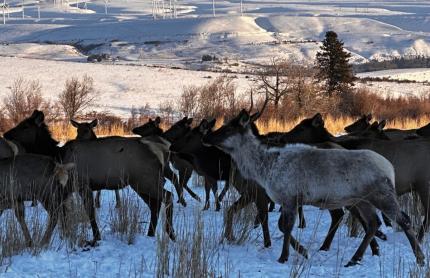
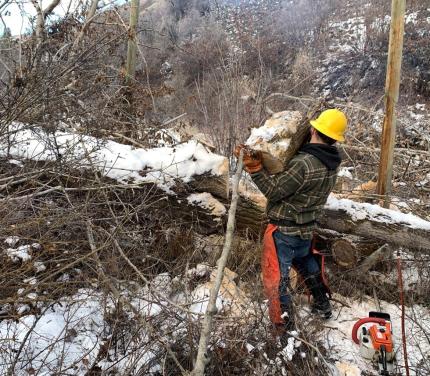
Oak Creek Wildlife Area: The winter elk feeding program continues on the Oak Creek Unit and Cowiche Unit of the Oak Creek Wildlife Area. Elk are in seasonally good health and are monitored daily throughout the feed season. With an increase in winter weather and an accumulation of snow, Oak Creek staff members are currently feeding an average of 2200 elk on the Cowiche Unit and 600 elk on the Oak Creek Unit daily.
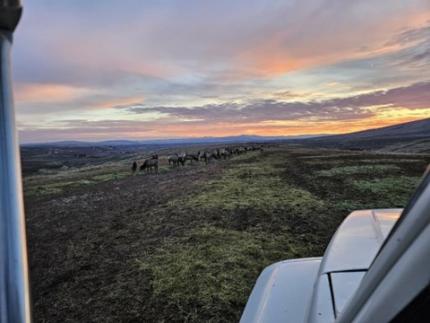
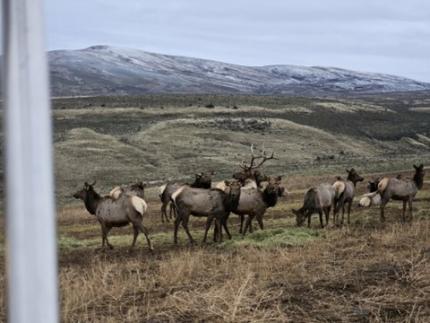
District 4 Bobcat Sealing: District 4 Wildlife Conflict Specialist Hand sealed a bobcat for a hunter who harvested the cat in Game Management Unit (GMU) 382.
District 8 Cougar Sealing: District 8 Wildlife Biologist Moore sealed a young cougar for a GMU 382 hunter.
Providing Recreation Opportunities
Manastash Ridge Trails Committee Meeting: Wenas Wildlife Area Manager Hughes and Lands and Recreation Specialist Frame met with the Manastash Ridge Trails Committee (MRTC) to discuss current and future projects and events for the Manastash Ridge trails. The MRTC is composed of representatives from each user group that frequently use the Manastash Ridge trails. These groups include hikers, runners, horseback riders, and mountain bike riders. Priorities for 2024 are working on getting cultural clearance and coming to an agreement as a group on the best reroutes for eroding sections of approved trails such as the Westberg trail. Hughes and Frame will be working with statewide recreational planning staff members and the MRTC to decide which reroutes will be the best to address environmental concerns and to provide a better opportunity for the public to recreate.
Sheep Company Target Shooting Area: Lands and Recreation Specialist Frame collected 650 pounds of target shooting material. More than normal amounts of trash had built up over the holiday season. Items found were target shooting material, coolers, pallets, food waste, and cardboard.
Colockum Winter Recreation: Colockum Wildlife Area staff members continued the development of a new winter non-motorized snow park at Orr Creek Road in the Stemilt Basin. WDFW acquired signs from Washington State Parks and posted them on the new gate at Orr Creek. This gate is still open due to the lack of snow this winter.
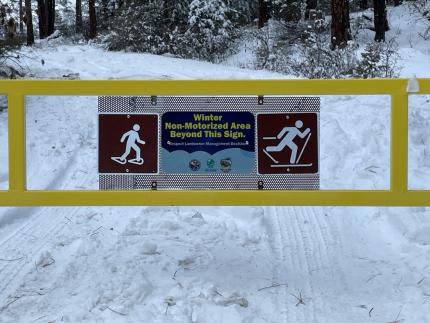
Sunnyside-Snake River Waterfowl Hunting Opportunities: There has been a large number of waterfowl moving into the Windmill Ranch, Mesa Lake, and Bailie Units of the Sunnyside-Snake River Wildlife Area with the recent winter weather. Although most wetlands are now frozen, hunters have been successful hunting in the corn fields.
Providing Conflict Prevention and Education
Rattlesnake Hills Elk: District 4 Wildlife Conflict Specialist Hand monitored elk activity on Rattlesnake Mountain including the Hanford National Monument and surrounding private lands. There were no reports of elk outside of Hanford.
Kahlotus Deer Damage: District 4 Wildlife Conflict Specialist Hand continued working wheat producers in the Kahlotus area with deer damage issues. He educated them on hazing strategies, damage permit hunting, and possible youth hunting opportunities. Additional damage permits were requested by two landowners and three youth from the Region 3 special permit pool were deployed.
Plymouth/Paterson Deer: District 4 Wildlife Conflict Specialist Hand conducted hazing and monitoring of deer activity near orchards and wine grape crops in south Benton County near the Columbia River.
District 8 Kittitas County Conflict: Conflict Specialist Wetzel hazed some elk from agriculture areas in Kittitas County. One row crop area was surveyed for a fencing contract. Wetzel and a houndsman removed a cougar from a neighborhood near Cle Elum. The cougar had been involved in a series of depredations.
District 8 Yakima County Conflict: Conflict Wetzel worked on fencing contracts with growers who were having problems with elk in orchards and one crop circle. Elk have been hazed from the orchard areas.
Providing Education and Outreach
Burrowing Owl Outreach: District 4 Wildlife Biologist Fidorra presented to the Spokane Audubon Society on the topic of Washington’s Burrowing Owl ecology and conservation. The 45-minute presentation was well received and attended by approximately 30 participants over Zoom.
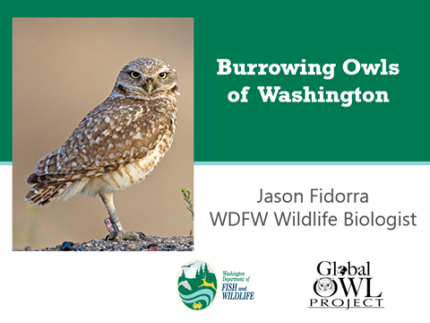
Conducting Business Operations and Policy
Criminal Justice Information System Certification: District 4 Wildlife Conflict Specialist Hand completed the required background check, fingerprints, training, and exam to obtain his Criminal Justice Information Service certification as required for Spillman users.
Managing Wildlife Populations
Columbian White-tailed Deer Recruitment Surveys: Biologists Stephens, Holman, and Aubrey conducted five surveys for Columbian white-tailed deer on Puget Island from mid-November to the end of December. The purpose of the survey is to get a ratio of does to fawns on the island. As an additional metric, biologists also get a minimum count of deer on the island. Puget Island is one of several areas surveyed for Columbian white-tailed deer during this time frame. This survey effort is coordinated by the U. S. Fish and Wildlife Service and additional participants include Oregon Department of Fish and Wildlife, the Cowlitz Tribe, and volunteers. Biologists counted a high of 189 deer on Puget Island and an average of 46 fawns per 100 does. See graphs below to see how this compares with prior year’s surveys.
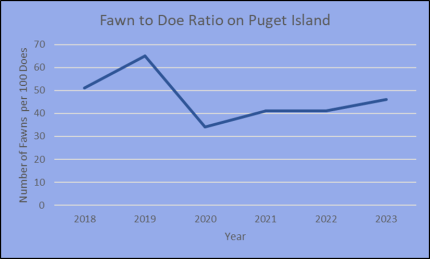
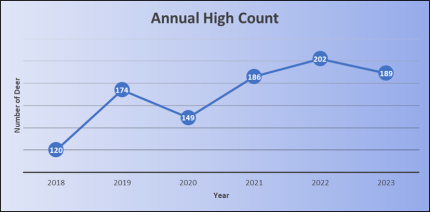
Year-Round Bat Acoustic Monitor Installation: Biologists Wickhem and Bergh were joined by Bat Biologist Tobin and Friends of the Columbia River Gorge Stewardship Manager Woods to install a year-round bat acoustic monitoring station on private land in Skamania County. The detector is powered by a solar panel, will only need to be serviced four times per year, and will hopefully be deployed in the same location for at least five years.
Washington Department of Fish and Wildlife and other partners have additional stations set up across the state in an effort to learn more about our native bats. We have many gaps in knowledge for many bat species including simple life cycle and life history. Acoustic monitoring is one way to help begin to answer some of those questions. For example, we can use these data to look at potential migration patterns and routes, seasonal movements, and active periods. These data can help inform wind energy development or elucidate fall and winter activity patterns. We can also use acoustic recordings as an index of activity to detect changes overtime on the landscape. They can also help us understand which species are susceptible to white-nose syndrome.
Acoustic activity has been shown to mirror changes in white-nosed syndrome affected populations, so this is one metric we use to understand impacts from this disease in the absence of being able to assess hibernacula. Visit our website for more information on Washingtons bats and the threat from white-nose syndrome.
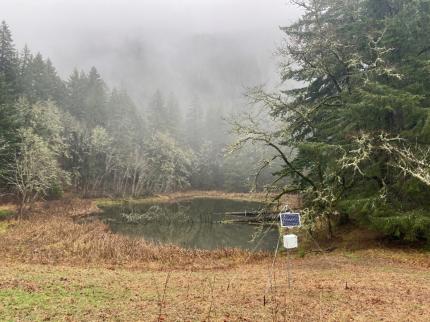
Injured Merlin: Biologists Wickhem and Bergh responded to reports of an injured raptor along a private road in Dallesport. When the pair arrived, they found a small merlin hopping next to the road, unable to fly more than a few feet. Thanks to help from two staff members on site, they were able to catch the bird without incident and transport it to Rowena Wildlife Rehab Center. Upon initial exam and x-ray, the veterinarian reported that the female raptor didn’t have any fractures or obvious bruising and was potentially just sore and disoriented after being hit by a car. She appeared to make a full recovery and was released near where she was captured a week later. This was one of three injured bird calls received by District 9 staff members on the same day. Big thanks to Wildlife Conflict Specialist Aubrey and staff members at The Dalles Dam for responding to the other reports.


Dusky Canada Goose Surveys: Biologist Wickhem conducted two dusky Canada goose surveys on the Shillapoo Wildlife Area and surrounding lowlands of Clark County this month. Biologists Stephens and Holman conducted the twice-monthly surveys in Cowltiz and Wahkiakum counties. Dusky geese are a sub-species of Canada goose that spend summers in Alaska and migrate through and/or overwinter in the lower Columbia River. Duskys are closed to recreational harvest due to low population levels.
The purpose of these surveys is to count dusky geese observed and read alphanumeric codes on any red-collared duskys. Wildlife managers survey the geese multiple times across their primary wintering grounds and use the data to generate survival estimates. Unfortunately, dusky geese were not observed on any surveys this month. Other notable sightings included the first swans of the season, red-tailed hawks, Northern harriers, bald eagles, great blue herons, egrets, sandhill cranes, snow geese and many species of waterfowl, Columbian white-tailed deer, black-tailed deer, elk, otters, nutria, and coyotes. Early December rain has helped to fill in the wetlands, but the area still needs a significant amount of rain.
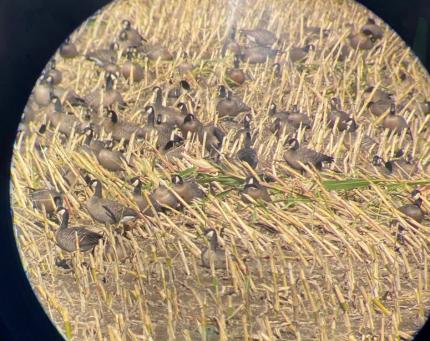
Columbian White-tailed Deer Surveys: Biologists Stephens and Holman along with Conflict Specialist Aubrey completed the annual surveys for Columbian white-tailed deer on Puget Island. Surveys consist of driving designated routes and counting all deer and classifying them as doe, fawn, or buck. The primary purpose of the survey is to generate a doe to fawn ratio and therefore monitor the annual productivity of the population. This survey is done in partnership with the U. S. Fish and Wildlife Service, the Cowlitz Tribe, Oregon Department of Fish and Wildlife, and with support from volunteers, all of whom survey different white-tail populations. Survey results will be summarized in future reports. Thanks to Customer Service Specialists Kean and Splitgerber as well as Regional Operations Manager Varley and Regional Director Sallee for participating in the surveys.
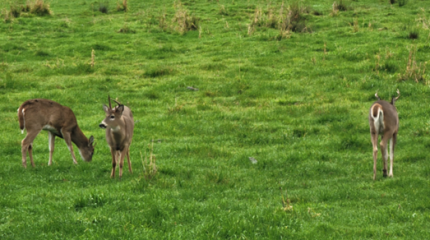
Collared Deer Mortality: On Christmas Eve morning Biologist Bergh received a message indicating that one of the GPS-collared mule deer in the Klickitat mule deer migration study had died. The collar had detected no movement for nine consecutive hours the day prior. When she arrived Bergh only found the collar and the cut off ears with ear tags attached. This was on private land in GMU 382 which was not currently open to tribal or non-tribal hunting.

Mudflow Elk Count: Assistant Manager Risley and Technician Crane had great visibility when they visited the Forest Learning Center where they conducted the bimonthly winter Mudflow elk count. Despite high snow levels, 108 individual elk were observed using Mudflow. Multiple visitors to the mountain stopped to talk during the survey. All were offered an opportunity to take a closer look using the spotting scope, which was then followed with additional questions about Mt. St. Helens’ most iconic and charismatic residents.
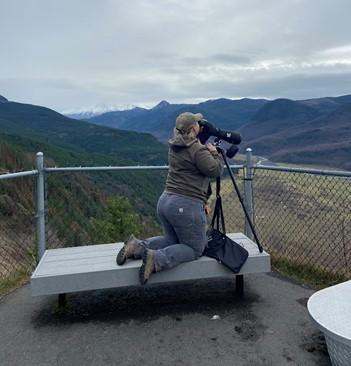

Injured Bald Eagle: Wildlife Conflict Specialist Jacobsen received a report of an injured bald eagle from Rowena Wildlife Clinic. A photographer was observing eagles along the mouth of the Klickitat River and saw one eagle that appeared to have an injured wing. When approached by the photographer, the eagle swam across the river to the cliffs on the other side. Jacobsen responded to the location and observed the injured eagle hopping on the cliffs across the river but was not able to access the bird’s location at the time. Later in the day, Biologist Wickhem was in the area and observed the eagle flying for a short distance. The eagle will likely recover on its own.

Injured Owl: Wildlife Conflict Specialist Jacobsen received a report of an injured great horned owl from Rowena Wildlife Clinic as well. A different photographer was observing owls in centeral Klickitat County and was concerned about an owl that appeared to have an eye injury. The photographer sent a video of the owl to Jacobsen. It is unclear what caused the injury to the eye, but Jacobsen determined that the owl was still very mobile and not a candidate for capture and treatment.
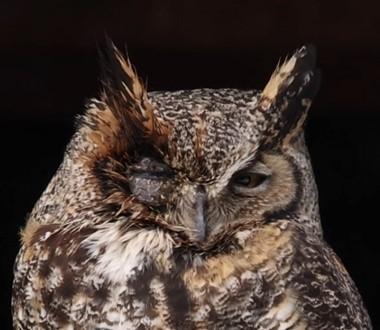
Deer Collar Retrieval: Wildlife Conflict Specialist Jacobsen and Volunteer Ridout collected a GPS collar which had reached the end of its lifespan and automatically fallen off a mule deer in Klickitat County. While driving in to collect the collar, Jacobsen and Volunteer Ridout observed two sets of fairly fresh cougar tracks in the snow.

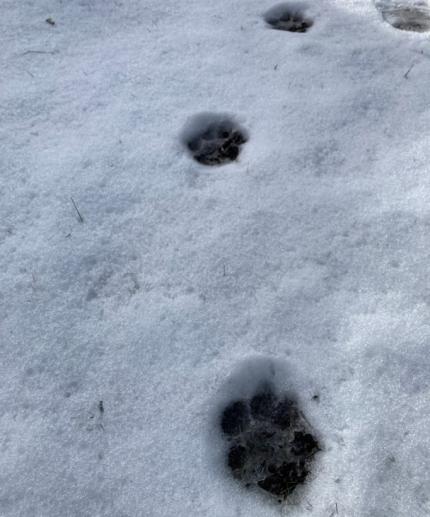
Providing Recreation Opportunities
Kress Lake Access Area: Access staff members have had to clean up multiple fallen trees over the last few weeks due to heavy wind and rains. Shown below is the 4th tree in the last month that has fallen at Kress Lake Access Area. Other sites have suffered the same but Kress Lake seems to be the hardest hit at this time. This type of clean up is a nice change of pace from the normal garbage dumps and other human caused abuse.
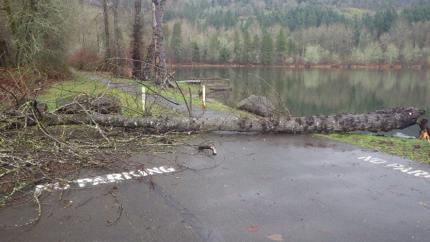
Providing Conflict Prevention and Education
Animal Tracks: A concerned homeowner contacted Washington Department of Fish and Wildlife staff members regarding some odd tracks and markings on a tree in her yard. Jacobsen provided advice to the reporting party and although he was not able to determine the identity of the track-maker. Jacobsen was able to rule out black bear, which was what the homeowner was concerned about.
Deer Fencing: Wildlife Conflict Specialist Jacobsen met with a Clark County landowner regarding ongoing deer rubbing damage to his Christmas tree operation. Jacobsen has been planning a deer fencing installation with the producer for this coming spring. Jacobsen walked the property with the landowner, identified new deer damage, and marked the boundaries for the proposed fencing project.
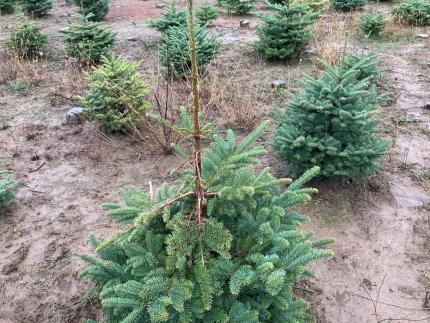
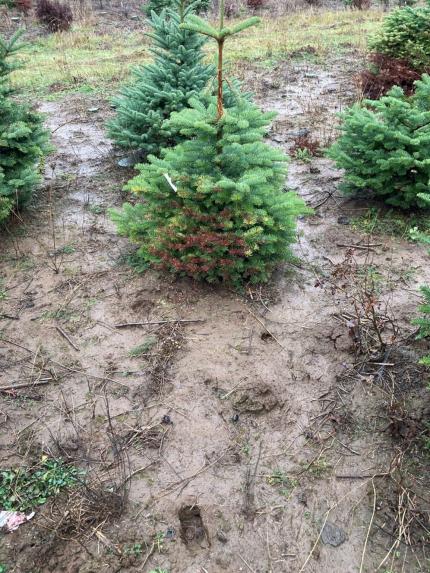
Depredation on Chicken: A landowner contacted Washington Department of Fish and Wildlife. They requested assistance preventing bobcat depredations on his chickens. Wildlife Conflict Specialist Jacobsen met with the landowner and inspected the landowner’s chicken coop. The landowner had one remaining chicken but planned to get more in the spring. Jacobsen provided advice on securing gaps in the existing chicken coop as well as utilizing an electric fence to prevent bobcats and other carnivores from accessing the chickens in their day pen. The landowner was appreciative of the assistance.
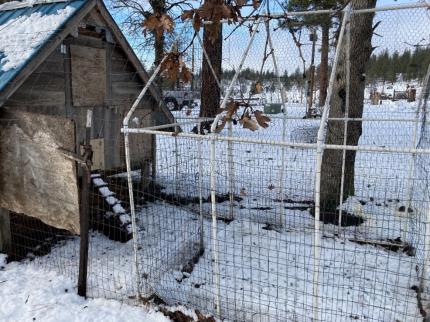
Cougar Samples: Officer Nelson responded to a report of a cougar that had killed a miniature pony. The landowner had shot and killed the cougar in the middle of the depredation. Jacobsen assisted Officer Nelson with pulling a tooth for aging purposes and pulling a tissue sample for genetic analysis (PDF). The cougar was a sub-adult male, as evidenced by the distinct black mark between the cougar’s legs (only males have this black penis sheath) and the residual spotting on the cougar’s hide, particularly on the insides of the limbs, known as “banding” at this stage in life.
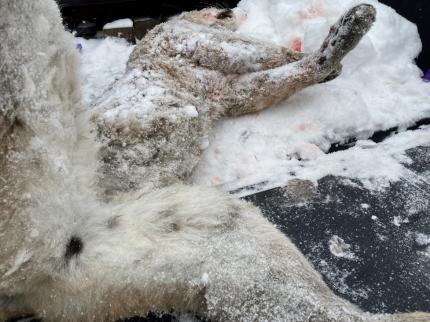
Garbage-Habituated Black Bear: Wildlife Conflict Specialist Jacobsen received a report from a Clark County residence regarding a black bear that had been regularly accessing stored garbage. The garbage had been stored in a poorly secured shed and the bear had gotten into the garbage multiple times before the homeowner contacted Washington Department of Fish and Wildlife. Jacobsen advised the homeowner on how to erect electric fencing around a structure and coordinated with Officer Hughes to loan out an electric fence energizer to the homeowner. After erecting the fence, the bear ceased accessing the garbage.
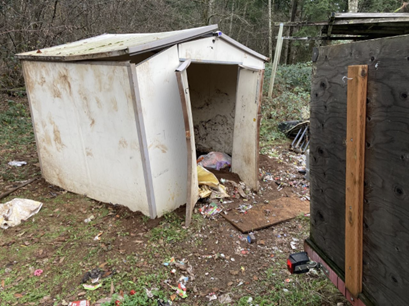
Conserving Natural Landscapes
Seeding and Surveying at Eagle Island: Assistant Regional Program Manager Hauswald and Assistant Manager Risley paid a visit to the Eagle Island Unit of the Mt. St. Helens Wildlife Area to seed wildflowers and native grasses at multiple grassland areas on the 230-acre island. A generous donation of native pollinator seed mix was made available to the wildlife area courtesy of Cowlitz Noxious Weed Control and Washington State Noxious Weed Control Board. A labor of love and patience, the wildflowers are not likely to flower and set new seed for approximately two years, but wildlife area staff members hope that the native plants will eventually fill in the grassland areas where they’ve been introduced and, subsequently, naturally reseed adjacent areas.
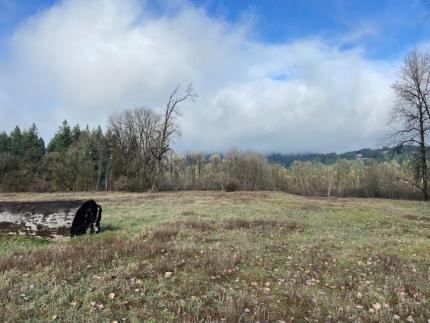
Hauswald and Assistant Manager Risley spent the latter part of the day surveying the forested portions of the island for invasive holly and assessing the success of past treatments of Scotch broom and blackberry. It was a beautiful day on the island and many eagles, ducks, and signs of deer presence were observed.
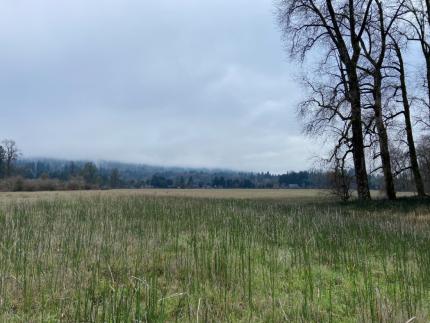
Mowing at Shillapoo Wildlife Area: Assistant Manager Breitenstein and Technician Crane spent the last several weeks mowing at the Shillapoo Wildlife Area. Mowing is completed annually on the wildlife area and is used to maintain green forage availability for overwintering waterfowl, as well as control invasive species such as Himalayan blackberry, reed canary grass, and Canada thistle. Mowing must be timed correctly to be completed before the ground becomes too wet for equipment to drive over but start late enough to avoid destroying too much cover during the pheasant hunt.
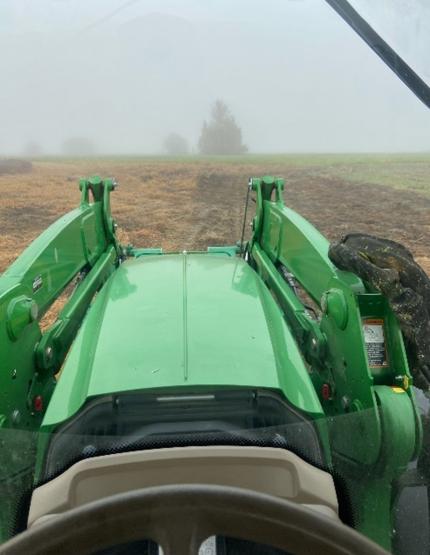
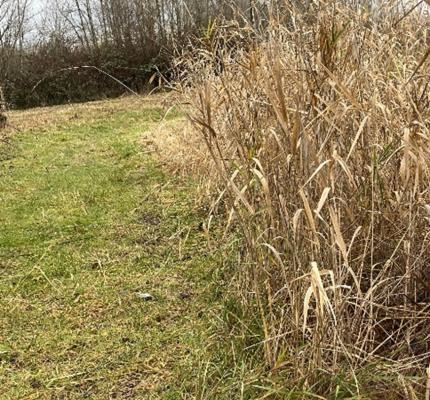
Managing Wildlife Populations
Sea duck, Marine Bird Surveys: Biologist Murphie participated in the annual Puget Sound Ecosystem Monitoring Program winter marine bird and mammal survey effort, as a primary observer. These surveys have been conducted since 1992 and sample the inland marine waters of Washington. Biologist Murphie has participated in this effort since 1995. Observers identify and count all birds and marine mammals seen within a fifty-meter strip on either side of the survey aircraft. The current survey track line extends about 4,000 miles. So far, the crew has completed about 65% of the effort. The figure below shows the track lines covered so far (blue lines) and the track lines remaining (red lines), as of Jan. 4.
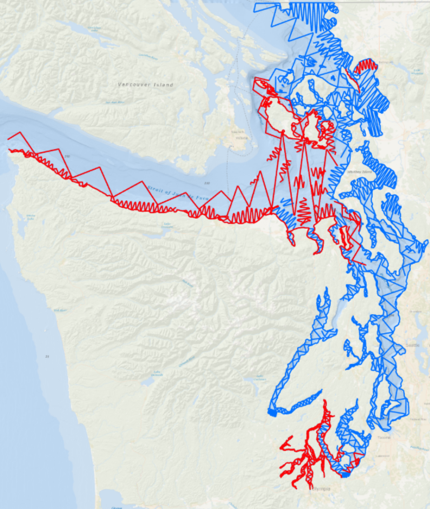
Grouse Wing and Tail Collection Barrels: Biologist Murphie placed grouse wing collection barrels at two locations in District 15 prior to the grouse season opener in September. They are located at Simpson Mill 5 near Matlock and at the George Adams Hatchery north of Shelton. Twenty-four samples have been collected this season, but none in recent weeks.
Goose Surveys: Biologist Cent and Novack conducted their bi-monthly surveys of dusky Canada goose across Grays Harbor and Pacific counties.
Swan Surveys: Biologist Cent conducted District 17’s annual tundra and trumpeter swan count, where she counted a total of 52 swans. This count is low, and Biologist Cent plans to survey a second time to confirm these numbers. Sometimes the swans are simply in a location that we are unaware of or do not have access to.
Brant Survey: Biologist Novack and Cent, along with Waterfowl Section Manager Spragens, conducted the annual survey of Brant at Willapa Bay. Just shy of 3,000 Brant were seen, which is well in line with prior years. Brant have been surveyed on an annual basis at Willapa Bay since 1959.
Providing Recreation Opportunities
Treponeme-associated Hoof Disease Permit Hunters: Biologist Novack has checked the hooves from various Master Hunter permittees and issued renewal letters for those submitting abnormal hooves. The renewal letters allow the Master Hunter to use their unused general season tag to try and harvest a 2nd treponeme-associated hoof disease infected elk.
Conserving Natural Landscapes
Morse Creek Cleanup: Wildlife Area Manager Laushman and Officer Lasko cleaned up an illegal campsite and debris located in the Morse Creek Unit.
Protection Island Visit: Technician Norris and Wildlife Area Manager Laushman visited the Zella Schultz Unit on Protection Island to assess recent work on invasive species and transplanted dune grasses.
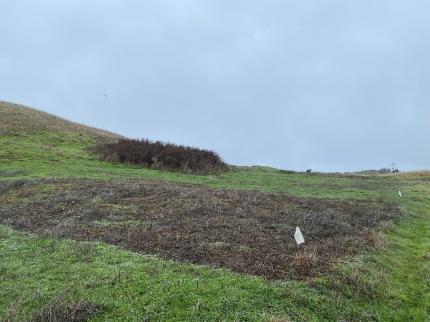
Scatter Creek Wildlife Area: Biologist Kronland, Scatter Creek Wildlife Area staff members, Washington Conservation Corps crews, and Ecostudies partners have been able to treat non-native vegetation and seed and plant plugs on all five units burned this summer on the West Rocky and Scatter Creek units of the wildlife area, setting-us up for a fantastic spring show of prairie blooms.
We have also been able to take advantage of fantastic fire effects from the previous burn season and sow additional seed into units burned in 2022. The efforts have gone far in enhancing habitat for federally listed Taylor’s checkerspot butterfly, Mazama pocket gopher, and all the other critters and plants that call the prairie and oak lands of the Scatter Creek Wildlife Area home, which we guess now includes bluegill.
Seemingly random flash flood events have been inundating the mima mounds on some of our post-prescribed fire restoration sites, leaving behind piles of fresh water pan fish and the lingering question of where they came from. So, find your bobbers, get some red worms, and come out to Scatter Creek to catch yourself a mess of prairie bluegill! But be quick, because the surface water doesn’t flow for long and you may need to rake them up instead.
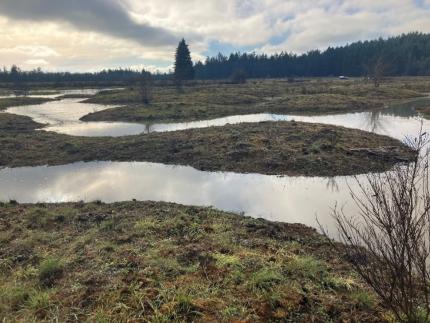
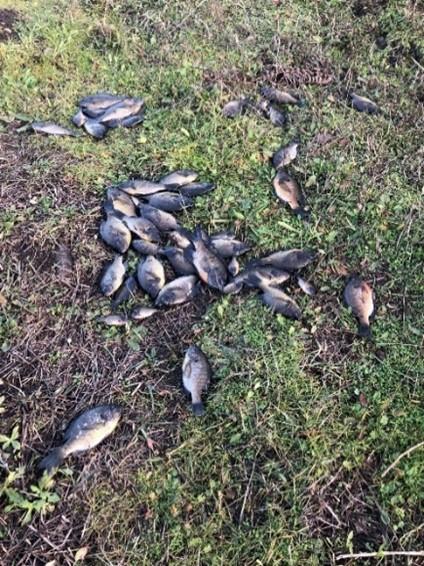
Providing Education and Outreach
General Wildlife Inquiries: Biologist Murphie responded to inquiries received by phone and email related to elk, deer, and duck hunting, grouse hunting, an osprey nest removal request, a sick Canada goose, fencing, and eastern gray squirrel.
Other
Snow Creek Site Visit: Wildlife Area Manager Laushman and Technician Stoneburner attended a group field tour led by the North Olympic Salmon Coalition and Jefferson Land Trust to learn about a recent restoration project on Snow Creek just upstream of the Discovery Bay Unit. The project increased stream complexity and reduced erosion and sediment loads in the creek, which will improve salmon habitat throughout the system.
